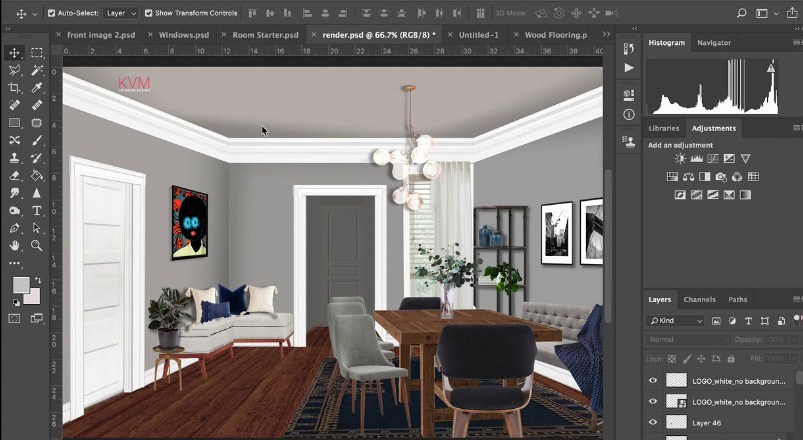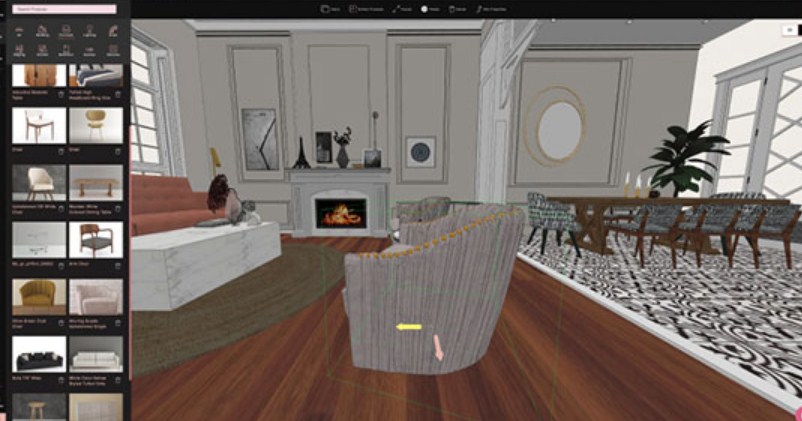Interior design rendering software has revolutionized the way professionals in the design industry create, visualize, and showcase their concepts. With technology advancing rapidly, the software now provides realistic 3D models that help designers, architects, and clients visualize spaces before making any physical changes.

In this article, we’ll explore the top interior design rendering software, their features, benefits, and how they can enhance your workflow. We’ll also dive into where to buy these tools, including their prices and the best options for your needs. Let’s get started! 🎨✨
What is Interior Design Rendering Software?
Interior design rendering software is a tool that allows designers to create 3D visualizations of interior spaces. These renderings help visualize the design concepts in a realistic manner, providing a better understanding of space layout, color schemes, lighting, and furniture placement.
Some key features of interior design rendering software include:
- 3D Visualization: Create lifelike renderings that reflect the final look of an interior space.
- Real-time Editing: Make adjustments on the fly and see instant changes to your design.
- Lighting and Textures: Enhance your project with lighting, textures, and shadows for realism.
- Customization: Choose from a wide range of materials, furniture, and decor options to match your vision.
Using rendering software enhances the design process by allowing designers and clients to view and modify the project before any physical work begins. This minimizes errors and ensures satisfaction with the end result. 🚀
Benefits of Using Interior Design Rendering Software

1. Time and Cost Efficiency
Using rendering software speeds up the design process significantly. Instead of manually constructing physical models or constantly revising designs with pen and paper, designers can quickly create and modify digital renderings. This saves time and minimizes costly mistakes that might arise from misunderstandings between the designer and client.
2. Realistic Visuals for Client Presentations
One of the most significant advantages of interior design rendering software is the ability to produce highly realistic visual representations. Clients can see exactly how a space will look before any physical work begins, which leads to better decision-making and satisfaction.
3. Flexibility and Customization
Most rendering software offers a wide variety of customization options. Whether it’s adjusting the color palette, experimenting with textures, or swapping out furniture pieces, designers have full control over every aspect of the space, allowing for infinite design possibilities.
4. Collaborative Capabilities
Many rendering software tools now offer cloud-based collaboration. This allows multiple stakeholders, from designers to clients and contractors, to access and make real-time changes to the project. It fosters better communication and ensures everyone is on the same page.
Top 5 Interior Design Rendering Software
Below are the top 5 interior design rendering software tools you should consider in 2025. These products are selected based on their features, ease of use, pricing, and real-world effectiveness.
1. SketchUp Pro
Visit SketchUp Pro Website
Overview
SketchUp Pro is one of the most popular rendering tools among designers and architects. It is known for its ease of use and powerful features that cater to both beginners and professionals. The software allows you to create detailed 3D models of interiors, with realistic lighting, textures, and shadows.
| Feature | Detail |
|---|---|
| Use Case | Perfect for interior and exterior design. |
| Pros | Easy to use, vast library of plugins and extensions. |
| Cons | Requires a learning curve for advanced features. |
| Price | $299/year for the Pro version. |
| Features | 3D modeling, real-time rendering, vast library, cloud storage. |
2. AutoCAD Architecture
Visit AutoCAD Architecture Website
Overview
AutoCAD is the industry standard for architectural design. With the AutoCAD Architecture version, you can create detailed interior designs and renderings that meet high standards. It is perfect for professionals working on both small-scale interiors and large-scale commercial projects.
| Feature | Detail |
|---|---|
| Use Case | Great for architects and large-scale projects. |
| Pros | Comprehensive, accurate, widely used in the industry. |
| Cons | Steep learning curve, high cost. |
| Price | Starts at $1,690/year. |
| Features | Advanced drafting tools, 3D rendering, collaboration features. |
3. V-Ray for SketchUp
Visit V-Ray for SketchUp Website
Overview
V-Ray is a high-end rendering software widely used in the design industry. It integrates well with SketchUp and offers superior rendering quality. Ideal for those looking for photorealistic renders, V-Ray allows for the addition of intricate details such as lighting, textures, and reflections.
| Feature | Detail |
|---|---|
| Use Case | Best for designers needing photorealistic results. |
| Pros | Photorealistic output, integrates well with SketchUp. |
| Cons | Expensive, steep learning curve. |
| Price | $350/year for SketchUp users. |
| Features | Realistic lighting, materials, camera settings, global illumination. |
4. Lumion
Visit Lumion Website
Overview
Lumion is an excellent interior design rendering software that makes creating stunning visualizations simple and fast. It allows users to create beautiful 3D visualizations with minimal effort, making it perfect for both beginners and professionals. The software includes a vast library of objects and materials to use in designs.
| Feature | Detail |
|---|---|
| Use Case | Ideal for quick and realistic renderings. |
| Pros | Quick rendering, easy-to-use interface, large asset library. |
| Cons | Requires a powerful computer for smooth rendering. |
| Price | Starts at $1,800/year. |
| Features | Real-time rendering, large object library, easy interface. |
5. Revit
Visit Revit Website
Overview
Revit is another tool from Autodesk designed for building information modeling (BIM). It is widely used in interior design and architecture for creating highly detailed 3D models. Revit is known for its ability to handle complex building systems and structural details in addition to interior design.
| Feature | Detail |
|---|---|
| Use Case | Suitable for professionals working on large-scale projects. |
| Pros | Industry-standard, great for collaboration. |
| Cons | Expensive, steep learning curve. |
| Price | Starts at $2,545/year. |
| Features | BIM integration, detailed modeling, collaboration tools. |
How to Buy Interior Design Rendering Software
When it comes to buying interior design rendering software, there are a few factors to consider:
- Price: Each software has its own pricing structure, ranging from subscription models to one-time purchases.
- Trial Versions: Many software tools offer free trials, allowing you to test the features before committing to a purchase.
- Where to Buy: You can buy software directly from the official websites of the respective products or through authorized resellers.
👉 Check out the links above for each product’s website and pricing. You can make a purchase directly through their platform or explore additional deals.
Use Cases and Problems Solved
Interior design rendering software solves several key problems in the design process:
- Uncertainty in Design: Renderings provide clarity on what a space will look like, reducing the risk of design errors and miscommunication.
- Time-Consuming Revisions: With real-time editing and the ability to quickly try out new layouts or color schemes, designers save time.
- Costly Mistakes: With virtual renderings, clients and designers can see the finished project before any materials or labor are used, minimizing the potential for mistakes that cost money.
5 Frequently Asked Questions (FAQ)
- What is the best interior design rendering software?
The best software depends on your needs, but top options include SketchUp, AutoCAD, V-Ray, Lumion, and Revit. - How much does interior design rendering software cost?
Pricing varies, with some tools starting at $299/year, and others, like Revit, costing over $2,500/year. - Do I need a powerful computer for rendering software?
Yes, especially for high-quality renderings. Some software, like Lumion, requires a powerful computer for smooth performance. - Can I use these tools for both residential and commercial projects?
Yes, most rendering software tools can be used for both residential and commercial interior design projects. - Is there a free version of interior design rendering software?
Some software like SketchUp offers free versions with limited features. However, to access advanced tools and libraries, you will need the paid version.
Conclusion
Choosing the right interior design rendering software is a crucial decision for any designer or architect. With the software mentioned above, you’ll be able to create stunning, realistic designs that satisfy both your clients and your creative vision. Be sure to explore each tool’s unique features and pricing options to find the one that best suits your needs!
Read More >>>
- The Ultimate Guide to Exterior Home Design Apps: Enhance Your Home’s Curb Appeal!
- The Ultimate Guide to Starting Your Own Graphic Design Franchise Opportunities, Benefits, and Top Products